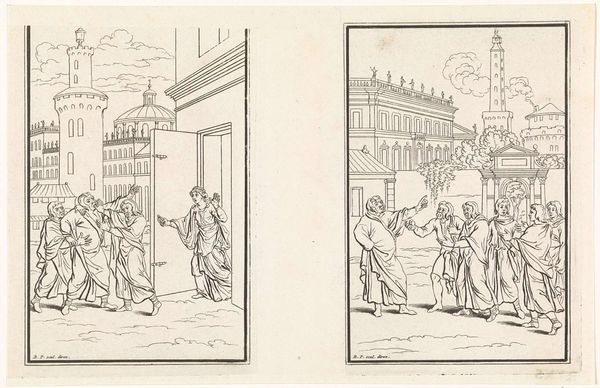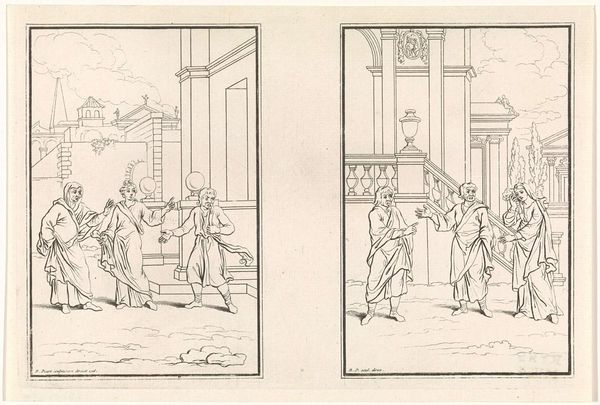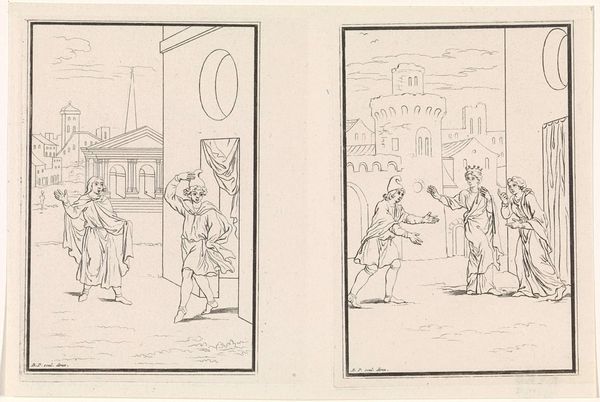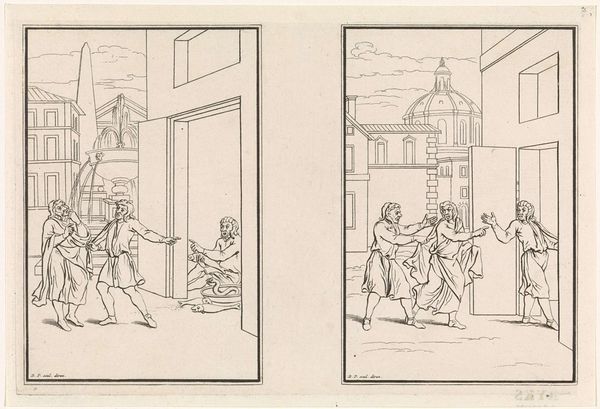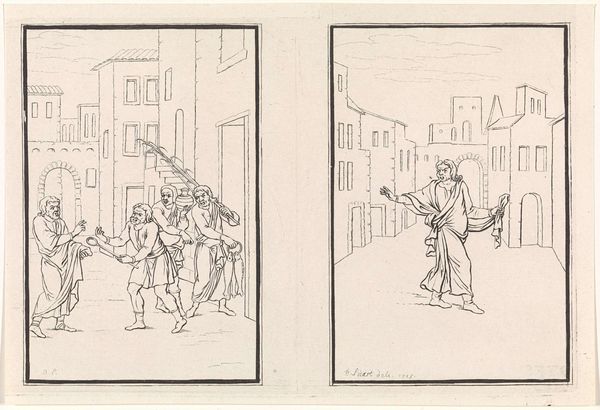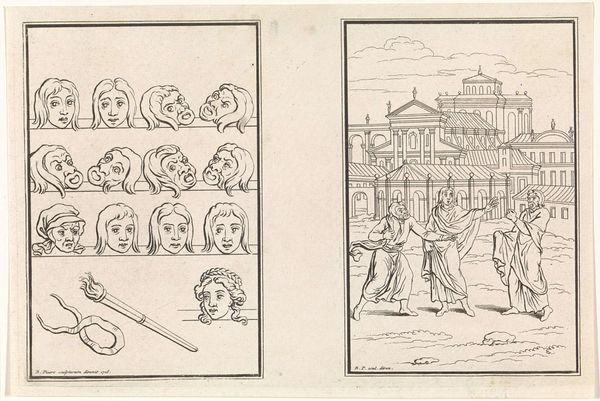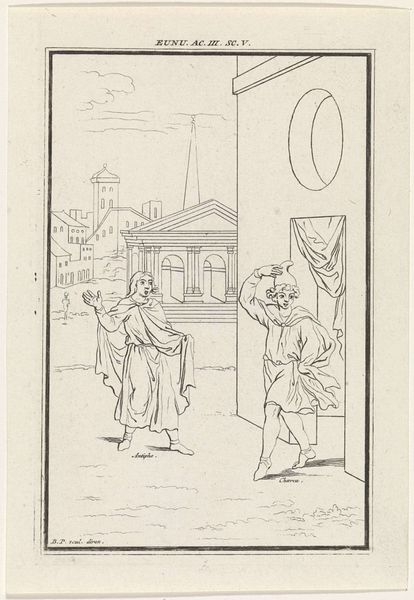
drawing, print, ink
#
drawing
#
narrative-art
#
baroque
# print
#
pen illustration
#
figuration
#
ink
#
line
#
cityscape
#
genre-painting
Dimensions: height 131 mm, width 197 mm
Copyright: Rijks Museum: Open Domain
Curator: I’m struck by the formality and balance in this drawing—very characteristic of Baroque aesthetics. Editor: And I see it—austere, classical…but also cold. Where’s the emotional spark? It feels staged, like a theatrical production almost. Curator: Precisely! What we are observing is "Twee scènes uit de komedie Adelphoe van Terentius" ("Two Scenes from the Comedy Adelphoe by Terence"). Created by Bernard Picart between 1716 and 1718. Look closely at the details – rendered in ink and pen with an emphasis on clean, sharp lines. It depicts scenes from a play, likely intended for reproduction as prints. Editor: Yes, there's something about the static poses and the calculated compositions that speak to the dissemination of cultural narratives, making accessible classical texts. Who was Terence? Curator: He was a Roman playwright of African descent, interestingly. These scenes capture moments from "Adelphoe," a comedy exploring themes of fatherhood, freedom, and the clash between rigid and permissive child-rearing. Editor: So, this is not merely illustration, but interpretation—Picart chose to emphasize the Roman ideals present in the play. The buildings loom large, symbols of empire and civilization against which the human dramas unfold. I almost miss any indication of actual emotion on the faces of the players, which appear generic. What significance do these cityscapes behind the characters have in relation to that sense? Curator: The cityscapes contribute significantly to that sense. They root the figures within a historical and architectural context. Those meticulously drawn buildings echo the themes of structure, order, and societal expectation prevalent in the play. Editor: It feels very intellectual. Not a gut-level engagement with family drama. There's almost a glorification of societal structure and maybe, a lack of care towards personal struggles. Curator: Yes, in Picart’s interpretation of the classic play. And it invites contemplation of enduring societal debates around individual freedom, responsibilities, and societal expectations, a theme still as relevant today. Editor: An intellectual exercise indeed! Still makes me wonder, did he ever feel it himself? Curator: Perhaps we'll never know entirely. But this piece serves as a powerful lens to investigate. Editor: Precisely! I walk away considering who are the players, on which stages we perform the roles which have been handed down, consciously, or unconsciously, to us.
Comments
No comments
Be the first to comment and join the conversation on the ultimate creative platform.

